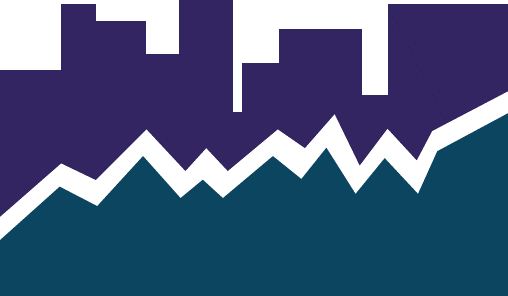The Monday Morning Quarterback
A quick analysis of important economic data released over the last week
The President has now signed the $900 billion COVID relief package. After passing both the House and Senate last week, the President called for changes including removing needless pork and increasing the personal stimulus checks from $600 to $2,000. While there was support for increasing the amount of the stimulus checks from Democrats, it did not gain traction and the pressure of federal unemployment benefits lapsing and leaving hundreds of thousands of employees in a lurch pushed the current package through as is.
In addition to extending unemployment benefits, providing stimulus checks, and carving out rental assistance that we discussed last week, the COVID relief package also contains $284 billion for another round of forgivable Paycheck Protection Program (PPP) loans. We wanted to take a deeper dive into that element of the relief package.
Last year, the SBA facilitated $525 billion in PPP loans, so this represents a 46% drop in available funds (there are also additional restrictions which we will discuss, so not everyone who qualified last time will qualify this round). This round is nearly identical to the first in terms of how loan amounts are determined for small businesses except that businesses in the hardest hit industries such as accommodations and food services can apply for 3.5 months of payroll instead of 2.5 months for everyone else.
This round has adopted additional changes in an attempt to target those hardest hit and most in need of the funding. Maximum loan size has been lowered from $10 million to $2 million. A review of PPP loans found that the average loan amount per borrower was just over $100,000 and 92% of loans were for $250,000 or less. However, over 25% of the total PPP funds were distributed to 1% of companies because of their larger size qualifying for loans of $1.5 million or more. For this next round, business size has been lowered from a maximum of 500 employees to 300 employees. There is also a requirement to prove at least a 25% decrease in revenue for a given quarter in 2020 compared to 2019. In the first round, the borrower only needed to certify that the funds were needed to maintain operations and retain employees. This is a much more rigorous bar to clear.
According to the Small Business Administration, approximately 85,800 Arizona businesses received PPP loans during the first round totaling an estimated $8.6 billion. This represents 1.6% of the roughly $525 billion that was disbursed. For this next round, far less will be available, but there will also be fewer applicants based on the new restrictions. The restrictions placed on the second round based on number of employees and loan size would affect 450 businesses who applied last year and who collectively received approximately $1.6 billion. An estimated 155 of those businesses had more than 300 employees and would be disqualified from applying completely. Those firms received approximately $705 million last round. For the remaining firms, their loan amount exceeded $2 million and their adjusted second loan would collectively be reduced by $277 million if they otherwise qualify for a second round of funding. It remains to be seen how many firms who received loans the first time experienced at least a 25% drop in gross revenue, but it is likely that this requirement will disqualify an additional percentage from the pool of potential borrowers. We should expect at least $1 billion less coming to Arizona businesses this round, and potentially much more depending on how things shake out.
Will the $284 billion be enough? Remember last time, initially $349 billion was approved for PPP loans but that was so quickly disbursed and there was still a substantial pipeline of unfilled applications that an additional $310 billion was approved. In the end, $525 billion was disbursed by the August 8th deadline. We’ll see how this round goes. But we’d be willing to bet that if there are qualified applicants left hanging, it’s likely that additional funds will be found.
On to this week’s data. For the U.S., unemployment claims finally saw a weekly drop but still remain very high. Third quarter GDP was revised slightly higher and confirms the recovery that occurred. Personal income decreased, as did consumer confidence, mainly due to the impacts of COVID on the job market. However, the personal savings rate still remains high by historic standards. New home sales and resales also dipped in November but are still well above levels from a year ago.
In Arizona, hotel occupancy continues to struggle. This is an industry with a substantial amount of pent up demand that should see a fantastic rebound as soon as the COVID vaccine is distributed to the public at large and herd immunity can be reached.
U.S. Snapshot:
- Initial claims decreased in the week ending December 19th after consecutive weeks of increasing. Despite the 89,000 drop the number of claims remained above 800,000 and up 268.3% from a year ago.
- Third quarter real GDP annual growth rate was upwardly revised to 33.4% from 33.1% in the third estimate. The increase reflected an increase of consumer spending and nonresidential fixed investment.
- Personal income decreased again in November. The November monthly decrease 1.1% after decreasing 0.6% in October. The drop was primarily due to the wind down of pandemic-related assistance programs. The savings decreased as well. But, it remains 72.0% above a year ago.
- Consumer confidence took a tumble in December. The index dropped from 92.9 in November to 88.6. The increased in COVID cases has increased pressure the labor market leading to the drop in confidence. Consumer sentiment in the other hand decreased from the preliminary figure earlier (81.4 to 80.7) this month but remained above the November level (76.9).
- New home sales (SAAR) decreased 11% to 841,000 in November. This is still 20.8% higher than the same month last year. The median sales price was down 0.7% but up 2.2% from a year ago.
- Existing single family home sales (SAAR) decreased for the first time in five months. Year-over-year, it is up 25.6% and the median price has increased 15.1% to $315,500.
Arizona Snapshot:
- Lodging continues to be heavily impacted across the state. November’s occupancy was down 26.3% from year ago. Year-to-date, demand is down 28.7%.












